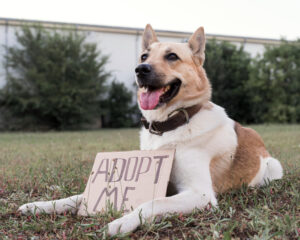Deciding to put your dog up for adoption is never easy. It’s a decision often driven by various life changes or circumstances beyond your control. This comprehensive guide aims to help you through this challenging process, ensuring your pet finds a new, loving home. We’ll cover everything from evaluating your decision to finalizing the adoption process.
Evaluating Your Decision
Before you take any steps, it’s crucial to evaluate your decision thoroughly. Ask yourself why you need to rehome your dog. Is it due to behavioral issues, financial constraints, or personal circumstances such as relocation or health problems? Sometimes, consulting with a vet, pet behaviorist, or professional trainer can offer solutions that may allow you to keep your pet. If rehoming is truly the best option, proceed with the confidence that you are making a responsible choice for your dog’s well-being.
Preparing Your Dog for Adoption
Preparing your dog for adoption involves ensuring they are healthy, well-groomed, and up-to-date with vaccinations. Schedule a vet visit to address any health issues, get a clean bill of health, and obtain a copy of medical records. Groom your dog thoroughly, as a clean and well-maintained appearance can significantly improve their chances of finding a new home.
Gathering Necessary Information
Compile a detailed history of your dog, including age, breed, temperament, and medical history. This information is crucial for potential adopters to understand your dog’s needs and personality. Include any quirks, habits, or special requirements your dog might have. The more transparent and honest you are, the better match you will find for your pet.
Taking Quality Photos
High-quality photos can significantly impact the success of your adoption efforts. Take several clear, well-lit pictures of your dog in various poses. Highlight their best features and ensure the photos capture their personality. If possible, include images that show your dog interacting with people or other pets, as this can help potential adopters visualize your dog in their own home.

Writing an Effective Adoption Profile
Craft a compelling adoption profile for your dog. Start with a catchy headline that highlights the best aspects of your pet. The profile includes information about your dog’s age, breed, temperament, and any special needs or quirks. Be honest about why you are rehoming your dog and what kind of home would best fit. Use an optimistic tone to make your dog appealing to potential adopters.
Choosing the Right Adoption Platforms
Selecting the right platforms to advertise your dog for adoption is critical. There are numerous online platforms, such as Petfinder, Adopt-a-Pet, and local animal shelters’ websites, where you can list your pet. Additionally, consider using social media platforms like Facebook, Instagram, and Twitter to reach a broader audience. Local community boards, vet offices, and pet stores often have bulletin boards where you can post flyers.
Networking with Friends and Family
Sometimes the best adopters are people you already know. Reach out to friends, family, and coworkers to see if anyone is interested in adopting your dog or knows someone who is. Personal referrals can often lead to successful adoptions because there is already a level of trust and familiarity.
Screening Potential Adopters
Screening potential adopters is a crucial step to ensure your dog goes to a safe and loving home. Prepare a list of questions to ask potential adopters, such as their experience with pets, their living situation, and their daily routine. Conducting interviews over the phone or in person can help you gauge their suitability. Consider scheduling a home visit to see where your dog will be living and to meet other household members and pets.
Setting Up Meet and Greets
Arrange meet and greets between your dog and potential adopters. Choose a neutral location, such as a park, to minimize stress for your dog. Observe how the adopters interact with your dog and how your dog responds to them. This meeting is crucial to ensuring a good match and that both parties are comfortable with the adoption.
Finalizing the Adoption
Once you’ve found the right adopter, it’s time to finalize the adoption. Draft an adoption agreement that outlines the terms and conditions of the adoption. Include details such as the dog’s medical history, any special needs, and the responsibilities of the adopter. Both parties should sign the agreement, and each should keep a copy. Ensure the adopter has all necessary supplies, including your dog’s medical records, food, toys, and any other essentials.
Post-Adoption Support
Offer post-adoption support to the new owner. This can include answering any questions they might have, providing advice on settling the dog into their new home, and being available for some time after the adoption. Staying in touch can help ease the transition for both the dog and the new owner and ensure that any issues can be addressed promptly.

Emotional Considerations
Rehoming a pet is an emotional process. It’s normal to feel guilt, sadness, or doubt about your decision. Remember that finding a new home for your dog where they will be loved and cared for is a responsible and compassionate choice. Take comfort in knowing you have done your best to secure a positive future for your pet.
Seeking Professional Help
If the process feels overwhelming, consider seeking help from professional pet adoption agencies or animal behaviorists. They can provide support, resources, and advice to make the transition smoother for both you and your dog. Some agencies offer rehoming services that handle the entire process, ensuring your dog finds a suitable new home.
Legal Considerations
Be aware of any legal considerations when rehoming your dog. Some areas have specific laws regarding pet adoption and ownership transfer. Ensure you comply with these regulations to avoid any legal issues. This might include microchip registration, updating licenses, and ensuring the new owner has all necessary documentation.
FAQs
How do I know if I’m making the right decision to rehome my dog?
Rehoming is a difficult decision, but if it’s driven by genuine concerns for your dog’s well-being or unavoidable personal circumstances, it can be the best option. Consulting with professionals and thoroughly evaluating your reasons can help you make an informed decision.
What should I include in my dog’s adoption profile?
Include your dog’s age, breed, temperament, medical history, and any special needs or quirks. Be honest about why you are rehoming your dog and describe the ideal home for them. Quality photos and a positive tone can make the profile more appealing.
How can I ensure my dog goes to a good home?
Screen potential adopters thoroughly by asking about their experience with pets, living situations, and daily routines. Conduct interviews and home visits to gauge their suitability. Trust your instincts and choose someone who seems genuinely committed to providing a loving home.
What should be included in an adoption agreement?
An adoption agreement should outline the terms and conditions of the adoption, including the dog’s medical history, any special needs, and the adopter’s responsibilities. Both parties should sign the agreement and keep a copy.
How can I support the new owner after the adoption?
Offer to be available for questions and advice during the initial transition period. Providing post-adoption support can help ensure your dog settles into their new home smoothly and address any issues that may arise.
What if I change my mind after starting the adoption process?
It’s important to be certain about your decision before beginning the adoption process. However, if you change your mind, communicate openly with potential adopters. It’s better to delay or cancel the process than to proceed with uncertainty.
Conclusion
Putting your dog up for adoption is a heart-wrenching decision that requires careful consideration and preparation. By following this comprehensive guide, you can ensure your dog finds a new, loving home where they will be cared for and cherished. Remember, rehoming your pet responsibly is a testament to your love and commitment to their well-being.

